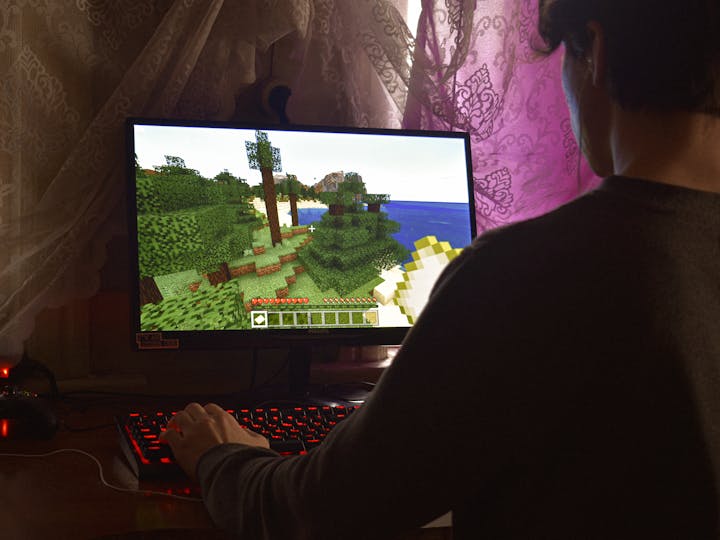In the dazzling world of video games, two giants clash in an ongoing battle for dominance — indie games and AAA titles. It’s David vs Goliath, creativity vs commercialism, passion projects vs polished blockbusters. Whether you’re a seasoned gamer or a curious newcomer, understanding the differences between these two forces reveals not just how games are made, but why we play them.
So, grab your controller, keyboard, or mobile screen — let’s dive deep into the ultimate gaming showdown: Indie Games vs AAA Titles.
What Are Indie Games?
Indie games are typically developed by small teams — sometimes even a single person — without the financial backing of major publishers. The term “indie” is short for “independent,” and that spirit of independence shines through in their innovation, experimentation, and artistic flair.
Common Characteristics of Indie Games:
- Small development teams
- Lower budgets
- Unique gameplay mechanics
- Niche or experimental storytelling
- Greater creative freedom
Games like Stardew Valley, Hollow Knight, Celeste, and Undertale have proven that small teams can make a big impact, often winning awards and becoming cult classics.
What Are AAA Titles?
In contrast, AAA (Triple-A) titles are produced by major game studios with massive budgets, hundreds of developers, and global marketing campaigns. Think of franchises like Call of Duty, Assassin’s Creed, The Last of Us, and FIFA. These are the blockbuster hits of the gaming world, aiming to deliver cinematic experiences, cutting-edge graphics, and mainstream appeal.
Common Characteristics of AAA Games:
- Large teams (100s of developers)
- Big marketing budgets
- High production values
- Voice acting, motion capture, and real-world physics
- Sequels and franchise development
AAA games aim to be safe bets, often investing millions to deliver guaranteed returns. But this can also make them risk-averse and formulaic.
Development Process: David vs Goliath
Indie Development: The Garage Band Vibe
Indie developers often work out of passion, basements, and bedrooms. Their process is lean, scrappy, and emotionally driven. They take risks that big studios wouldn’t dare touch, crafting bizarre yet brilliant experiences that leave lasting impressions.
They rely on:
- Crowdfunding (Kickstarter, Indiegogo)
- Self-publishing on platforms like Steam, itch.io, or mobile stores
- Tight community engagement
Indies can respond to feedback quickly, pivoting in real-time based on player response.
AAA Development: The Blockbuster Machine
AAA games operate like Hollywood studios. There’s a hierarchy, deadlines, milestones, and departments for everything from lighting to AI. Budgets can soar past $100 million, and marketing is as important as the game itself.
These studios are less agile. Patching a bug or shifting design mid-development can take weeks — if not months. But the end product? Visually stunning, expansive worlds with all the bells and whistles.
Gameplay and Innovation: Who Dares Wins?
Indie Games: Breeding Ground for Innovation
Since indie devs aren’t shackled by corporate red tape, they often lead the charge in gameplay innovation.
Examples:
- Papers, Please made bureaucracy exciting.
- Baba Is You turned logic puzzles on their head.
- Slay the Spire redefined roguelike deck-builders.
They experiment boldly — mashing genres, using minimalist art, and delivering emotional narratives that AAA titles rarely risk.
AAA Games: Polished but Predictable
AAA titles lean toward tried-and-tested formulas. First-person shooters, open-world RPGs, sports simulations — genres with proven success. This doesn’t mean they lack innovation, but risk is carefully calculated.
Big studios innovate incrementally:
- Assassin’s Creed evolved from stealth to RPG over a decade.
- GTA pushes realism but still follows its classic open-world chaos.
- Cyberpunk 2077, though ambitious, struggled under the weight of its hype.
Graphics and Presentation: Who Looks Better?
AAA: Visual Powerhouses
AAA titles blow minds with realism. Facial animations, ray tracing, weather systems — all created to immerse players in next-level experiences.
Games like Red Dead Redemption 2, Horizon Forbidden West, and Final Fantasy XVI showcase the pinnacle of what gaming hardware can do.
Indie: Style Over Realism
Indies don’t compete on realism — and they don’t try to. They carve their own lane with unique aesthetics.
Examples:
- Hollow Knight: hand-drawn gothic elegance.
- Hyper Light Drifter: neon-pixel sci-fi.
- Limbo: black-and-white minimalist dread.
These visuals may be simple, but they’re distinctive — often becoming iconic.
Storytelling and Emotion: Who Tells It Better?
Indie: The Personal Touch
Indie games thrive on personal storytelling. They explore mental health, grief, love, and identity — topics often untouched by mainstream titles.
Games like:
- Celeste: overcoming anxiety through platforming.
- Night in the Woods: existential dread meets talking animals.
- To the Moon: pixel art that brings players to tears.
These stories linger long after the credits roll.
AAA: Epic but Sometimes Hollow
AAA games often follow epic, cinematic arcs with high stakes and grand narratives.
Games like:
- The Last of Us series: emotional, mature storytelling.
- God of War: mythology and fatherhood.
- Mass Effect: space opera with choices and consequences.
But AAA stories can sometimes feel generic or forced — aiming for mass appeal rather than emotional depth.
Pricing and Value: Bang for Your Buck
Indie Games: Affordable Experiences
Most indie titles are priced between $10–$30. Considering their replayability, uniqueness, and frequent updates, they often deliver excellent value.
Sales on platforms like Steam and Epic Games Store make them even more accessible.
AAA Games: Premium Price Tags
AAA games launch at $70 or more (especially with deluxe editions). Some come with microtransactions, season passes, and cosmetic DLCs — pushing the total cost even higher.
While you often get dozens of hours of gameplay, the investment is significant.
Community and Modding: Who Connects Better?
Indie Games: Tight-Knit Tribes
Indie devs actively interact with their player base via Discord, Twitter, Reddit, and forums. Fans often feel like part of the journey.
Many indie games embrace modding, fan art, and community-driven content.
AAA Games: Massive Yet Distant
AAA communities are vast but harder to penetrate. Feedback is heard but takes longer to impact development. However, franchises like Elder Scrolls and Minecraft (originally indie) support robust modding scenes.
Mobile and Accessibility: Gaming On The Go
Indie games dominate mobile platforms. Their lower hardware demands and short gameplay loops suit mobile play.
Popular examples:
- Monument Valley
- Reigns
- Downwell
AAA games are slowly entering the mobile space, but often with compromised graphics or monetisation-heavy models (Call of Duty Mobile, Genshin Impact).
Midpoint Check-In: Where Online Casinos and Casual Gaming Meet
In the middle of this creative spectrum lies a unique blend of casual gamers who dip between both worlds — and some of them find their thrills in online pokies and chance-based games.
This is where we pause to acknowledge a different corner of the gaming universe. Platforms like stellarspins online pokies australia bring the excitement of spinning reels and real money wins to a diverse range of Aussie players. Just like indie games, these pokies often prioritise theme and fun over blockbuster graphics, creating immersive experiences on a different scale. And much like AAA titles, they reward loyalty, feature slick design, and cater to a broad audience.
Gaming, whether it’s strategic, story-driven, or chance-based, continues to diversify — and players now jump between genres and formats seamlessly.
Pros and Cons Breakdown
| Aspect | Indie Games | AAA Games |
|---|---|---|
| Budget | Low | Extremely High |
| Team Size | Small (1–20 people) | Large (100s) |
| Innovation | Very High | Moderate |
| Graphics | Stylised, unique | Cutting-edge realism |
| Storytelling | Personal, emotional | Cinematic, epic |
| Pricing | Affordable | Expensive |
| Community Interaction | Close-knit, interactive | Large, distant |
| Platform Reach | PC, mobile, Switch | PC, console |
| Modding Support | Often strong | Varies by publisher |
| Risks Taken | High — creativity first | Low — profit-driven |
The Rise of AA Games: A Middle Ground
In recent years, a new category has emerged: AA games — mid-budget titles with small teams but relatively high production quality.
Examples include:
- Hellblade: Senua’s Sacrifice
- A Plague Tale: Innocence
- GreedFall
These games blend indie storytelling with AAA polish, filling the gap between the two extremes.
Who’s Winning?
It’s not a matter of who’s better — it’s about what you’re looking for:
- Craving originality, heart, and creative risk? Go indie.
- Want cinematic worlds, huge battles, and advanced gameplay systems? Go AAA.
- Prefer something in between? Try AA titles.
- Need casual thrills on mobile or want to test your luck online? Explore pokies or hybrid mobile titles.
Gaming today offers more choice than ever before. Whether you’re rescuing chickens in an 8-bit village or leading armies in a photorealistic warzone, there’s a game for you.
Final Thoughts: A Diverse Gaming Future
The battle between indie and AAA isn’t a war — it’s a rich ecosystem. One inspires the other. Indie games often birth mechanics that AAA later refine. AAA games push hardware that indie games later reimagine. It’s a dance of innovation and polish, of boldness and big budgets.
As players, we’re the real winners. We live in a golden era where imagination meets technology — and everyone has a seat at the table.
So next time you load up a game, whether it’s an artistic indie masterpiece or a blockbuster title, remember — you’re part of something bigger. Something magical.



